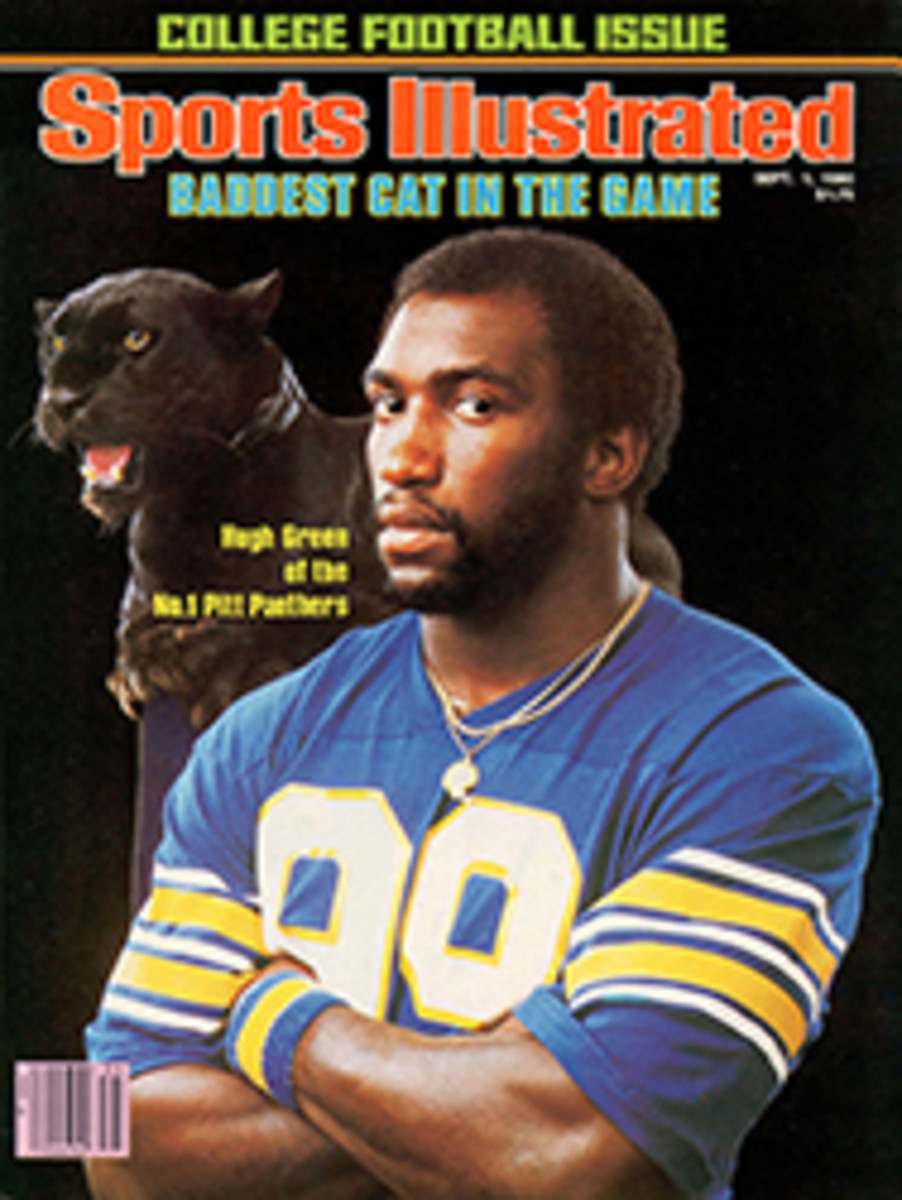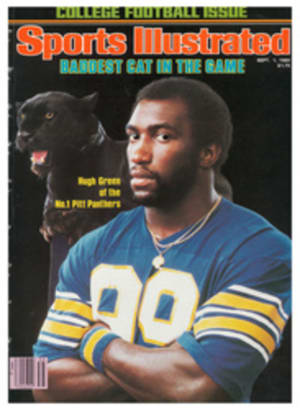
THE GREAT TOM VS. JACK DEBATE
Going into last week's World Series of Golf at Akron you could get into all sorts of arguments about who should be the PGA Player of the Year—Jack Nicklaus with his two immensely stirring victories in the U.S. Open and the PGA, or Tom Watson with six U.S. tour wins plus the British Open plus all that loot he'd won. The debate went on even after Watson waltzed away with another, ho-hum, $100,000 to become golfs first half-million-dollar-a-year man. To be precise, his official 1980 earnings have now reached $510,258, compared to Nicklaus' trifling $175,786. But there is also a little irony here. Before Sunday's final round, Nicklaus was forced to withdraw from the tournament because of a pain in his back. If there were any justice, it is Watson, with his weighty wallet, who should have had the bad back.
But even if Nicklaus had been able to continue, it's doubtful he could have prevented Watson from winning this latest edition of the World Series, which brought together 32 players from around the world. Jack was six strokes off the lead after 54 holes and had already confessed to friends that he was trying very hard not to be bored, the event not being a major championship.
As for Watson, all he did was shoot rounds of five-under-par 65 on the first, third and fourth days of the championship on the long and rugged south course at the Firestone Country Club. These made the 75 he shot on Friday look like a typographical error.
Those 65s simply did in the elite field. The opening round not only gave Watson the lead, but it also won him the "battle of the glamour pairings," for he was grouped with Nicklaus and Lee Trevino that day. Nicklaus and Trevino did their part to make it a memorable afternoon in golf—Trevino by holing out a nine-iron for an eagle 2 on the 11th hole on the way to a 69 and Nicklaus by chipping in for a birdie on the 9th en route to a 68.
After Friday's play, Watson and Nicklaus were tied at 140, even par, Watson having committed his 75 and Nicklaus a 72. The trouble with this was that it left the tournament momentarily in the hands of Craig (The Walrus) Stadler, who, at 135, held a one-shot lead over Jerry Pate and Ben Crenshaw.
Watson's second 65 left him in a triple tie for the lead with Stadler and Trevino. The next morning, before the start of the final round, Nicklaus was working on the practice tee and suddenly felt a pain in his back, a muscle spasm, and was unable to swing the club. He wasn't a wheelchair case, but for only the second time in his career he had to withdraw from a tournament. Aside from a couple of exhibitions and outings, he doesn't intend to play any more golf this year anyhow, so he wasn't overly concerned—"unless it's a trend," he said.
Watson wasn't given a lift by Nicklaus' abrupt departure. "I just hope he's O.K.," said Tom. Watson was, for sure, with that closing 65, as was the Watson treasury. If you count the $59,250 he collected for the British Open—and only the purest of PGA statisticians don't—Watson now has made close to $570,000 in 1980. He plans to enter two more events this year, and so has an excellent chance to go over the $600,000 mark, a staggering sum.
There may never be a tougher season in which to try to pick a Player of the Year, an award that has been Watson's private property for the past three. And it remains a fairly difficult thing to decide despite Watson's heroics in Akron. In the locker rooms and grills, opinion is still divided. Players who lust for major championships regard Nicklaus' majestic double as unarguably superior to Watson's accomplishments. But just as many competitors are in awe of Watson's seven victories, which include the one major, and his emergence as the sport's first $500,000 man.
The dilemma was exemplified by the attitudes of three of their more illustrious contemporaries. At Firestone, Hale Irwin said, "Golfer of the year? There's no question about it. It's Jack." After which Trevino said, "There's no contest. It's Watson." And Crenshaw said, "When I think about the things both of them have done, it blows my mind."
Watson wins the numbers game any way you want to play it. He and Nicklaus competed together in 10 tournaments in 1980 besides the World Series. In those, Tom finished ahead of Jack in six. Moreover, Watson has been uncannily consistent. He hasn't finished worse than 19th in any tournament, and the record reads that he has been in the top 10 in 16 of the 21 events he entered.
Part of the reason for this, of course, is that Nicklaus spent all winter and the spring reshaping his game for the splendid deeds he performed at Baltusrol and Oak Hill. Insofar as being a competitor, Nicklaus might as well not have been in some of the earlier tournaments, such as the Gleason, in which he tied for 53rd, or the Nelson (tied for 43rd), or Atlanta, where he missed the cut.
"I was working on getting my swing back like it was in the 1960s," Nicklaus said at Akron. "A little flatter. I started driving straighter because of that. I was also working on my Phil Rodgers short, game, which was costing me about five or six shots a round. When my driving improved and my short game got better, I wasn't making any putts. But then it all came together in the Open and the PGA. I kept the ball in play, I chipped and pitched well, and I started making putts. That's a tough combination. The only other explanation I can give about why I did so well in the Open and the PGA is that maybe I'm less intimidated by those kinds of golf courses than some of the other guys."
Meanwhile, Watson went along his cheery way, outworking everyone else, which is his basic explanation for the victories and the riches he is acquiring. In Akron after that horrendous 75, he marched to the putting green and the practice area and spent two long hours there, hitting drives and stroking putts endlessly, right into darkness. He would rap putt after putt until he could sink a three-footer, a five-footer and an eight-footer three consecutive times.
It was an exercise that brought immediate results on Saturday. On Sunday he destroyed the field—he was five under for the day through 12 holes and coasted home with a two-stroke victory over Ray Floyd, whose own 65 pulled him ahead of Trevino, Stadler, Crenshaw and Pate, all of whom had started the day hoping to catch the leader.
It was only a contest for nine holes, when Trevino and Pate were within one stroke of Watson, and a few others—Crenshaw, Floyd, Lon Hinkle and Irwin, mainly—were within hollering distance, which is sometimes known as three shots back.
But Watson pretty much removed any doubt about the outcome when he birdied the 10th and 12th holes and went on to open up a four-stroke gap over his closest pursuit, a margin that wouldn't be narrowed until Floyd closed with two birdies on the last three holes while Watson was affording himself the luxury of a bogey on 18.
Those birdies of Watson's on the 410-yard par-4 10th and the 178-yard 12th, a par 3, neither of which had been playing as a birdie hole on the south course at Firestone, go a long way toward explaining Watson's magic. On the 10th he burned a drive to within a nine-iron of the green, and he hit that nine-iron to within a foot of the flag. On the 12th he hit a six-iron as far away from the cup as he could get, to the left front edge of the green with the cup at right center, and from there he drilled the putt into the hole. The golf ball might now be nearing the Pro Football Hall of Fame in Canton, down the road, if it hadn't struck the back of the cup. It popped up in the air, came down on the lip, and then dropped.
One birdie of skill, one of luck. But such things happen to players dominating a crazy and unpredictable game. Why? "Because you're aiming at the hole," Watson said, smiling.
"I'm getting to be a better player every year and it's really fun," he went on. "I'm getting older, wiser, smarter, even shorter off the tee, but maybe straighter. I'm in control of myself out there, and that's a great feeling, I'll tell you. All I'm trying to do is get the best out of my ability. If you don't do that, you'll always regret it, no matter what your job is."
Last week Watson continued to get the best out of the economy as well. At the end of the World Series, as has been the case all year, the only person close to Tom Watson was E.F. Hutton.
PHOTO
TONY TOMSIC
Watson says he is shorter but straighter off the tee than he used to be—and also older and smarter.
PHOTO
TONY TOMSIC
D'ya like the man with the most majors or Mr. Megabucks?

